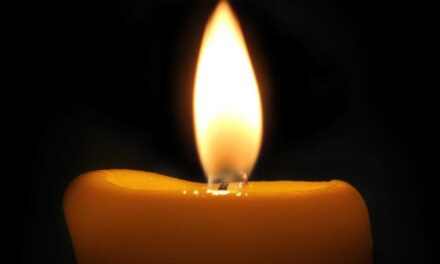Scientists said Thursday that they have found more than 41,000 genetic “relatives” of 27 enslaved people who were buried in Maryland’s Catoctin Furnace African American Cemetery about 220 years ago.
Experts from Harvard University and the Smithsonian Institution said the discovery showcased a new research approach that could be invaluable to people seeking clues about long-lost ancestors.
The method could be especially vital for African Americans, whose lineages were often destroyed by generations of enslavement and whose family histories went unrecorded, the scientists said in a study published in the journal Science.
It is the latest in a series of efforts, supported by Black communities, that use technology to examine burials of enslaved people to fill in the yawning gaps in African American history.
Similar efforts are underway at sites in Williamsburg, Va.; St. Mary’s, Md.; and Charleston, S.C.
In the Catoctin Furnace case, DNA was recently obtained from the bones of 27 people — 11 genetically female and 16 genetically male — exhumed from the cemetery 40 years ago to make way for a road project. An enslaved workforce of several hundred toiled at the iron-making site north of Frederick in the late 1700s and early 1800s.
Their DNA was then compared with that of 9 million people in the vast database of 23andMe, the California genetic firm that people use to have their genomes analyzed for health and ancestry information. That group of participants consents to having their data used anonymously in research, and their identities are not known to researchers.
The 41,799 people can be contacted in theory, said Éadaoin Harney, a population geneticist at 23andMe and one of the study authors.
“We are considering a way to thoughtfully and ethically return results to those in the 23andMe database who would like to know if they are connected to the Catoctin Furnace individuals,” company spokesman Andy Kill said in an email.
Raquel Fleskes, an assistant professor of anthropology at Dartmouth College who also works with historical DNA, said: “It’s a remarkable paper. However, it leads to a lot of questions regarding how do we open this Pandora’s box.”
The study noted that the vast majority of the genetic relatives are not direct descendants of the Catoctin individuals: “Most connections are likely between collateral relatives … [who] descend from a common ancestor who lived generations before the Catoctin individuals” and may not have lived in America.
But almost 3,000 people were found to be “close” relatives, akin to a great-great-great-grandchild, or a first cousin six times removed, Harvard said in a press release.
And the highest concentration of close relatives — a total of 30 — was in Maryland, suggesting that Catoctin descendants and their relatives stayed in or returned there after emancipation, the study said.
“I’m astonished,” said Vicki L. Winston, 65, of Kearneysville, W.Va., who is the great-great-great-granddaughter of Hanson Summers, who was enslaved at the furnace. He does not appear to be associated with the cemetery burials. Summers died in 1899.
“It’s just overwhelming to see how far back they can go,” she said. “It’s just coming together like it was supposed to be. … I’m just waiting to see how close we can get.”
Winston’s connection to the her enslaved ancestor was established in 2022 via old-fashioned genealogical sleuthing.
Harvard said this was the first time “ancient” DNA technology was used with a giant genetic database for such research.
The study found that the Catoctin dead had ties to Africa, specifically to the Wolof, Mandinka, Kongo and Luluwa groups, and to ancestors in Ireland and Britain.
The European ancestry largely came from the rape of Black women by White men, the report says.
The findings are “a leap forward,” said Douglas Owsley, curator of biological anthropology at the Smithsonian’s National Museum of Natural History and one of the paper’s authors.
“This is a transformative process, in terms of the ability to follow people’s histories back in time,” he said.
Harvard professor Henry Louis Gates Jr. was a co-author and consultant on the study. “To be an African American alive at this time, when we’re experiencing a revolution in the use of genetics to solve genealogical mysteries, is a blessing,” he said.
“We are the first generation who now have access to a methodology that helps us break though the proverbial brick wall of the 1870 federal census,” before which the census did not list enslaved African Americans by name, he said.
In the past, genealogists had to search the records of White enslavers to learn the stories of the Black people they enslaved, he said.
“But now we have another method,” said Gates, host of the public television show “Finding Your Roots.”
People may not learn a precise connection to a forgotten ancestor, “but at least it’s something,” he said. “Whereas [before], there was nothing. … That information was absent. … That box was blank.”
David Reich, a Harvard geneticist who specializes in old DNA and is a co-author of the paper, said, “I’m very happy about this particular study and the way it was carried out in consultation with a community that was connected in some way to the remains.”
It is the latest step in a nine-year examination of the site started by Maryland archaeologist Elizabeth A. Comer, an officer for the Catoctin Furnace Historical Society, and supported by the African American Resources Cultural and Heritage Society, of Frederick County.
“We’re finally there, or part way there, I should say,” Comer said. “I am absolutely elated that we got to this point. … Good things take time. I knew it would be a long haul. I just didn’t know how long.”
Comer said she has long dreamed of the possibility of somehow putting names to the anonymous enslaved buried at Catoctin. And this study “puts the African American DNA front and center,” she said.
Two years ago, experts unveiled a study that used the same Catoctin DNA to establish family relationships among the cemetery burials. So far, five families have been identified.
In one family, two boys, a newborn and two-month-old, were buried on either side of their mother, who was about 22 when she died. Some distance away, another relative of hers, a boy about 10, was buried. Their exact relationship is unclear.
Another consisted of a mother, her infant son and the mother’s sibling.
Yet another family was a boy about 4 and his sister, who was about 2.
The project also created facial reconstructions of two people whose remains were removed from the cemetery: one a woman in her 30s who experts think may have died in childbirth; the other, a teenager with a damaged spine.
The faces are based on copies of the original skulls held at the Smithsonian.
The investigation began when Comer, who grew up on a farm near Catoctin, suggested to the Smithsonian that it reexamine the cemetery bones that had come to the National Museum of Natural History in 1979 and 1980.
They had been taken from the site when nearby Route 15 was being expanded. More than half the cemetery graves were removed. Dozens more are still there.
Signs of the toxic and backbreaking work the enslaved people had to do at the primitive ironmaking site emerged.
One older man’s back was so severely bent that it had to be broken to get him into his grave, experts said.
Another man’s bones had extremely high levels of zinc, probably from having to clean deposits from the inside of the furnace and suggesting he may have had “fume fever” as a result, the experts said.
Indications of sickle cell disease, an inherited blood disorder that mainly affects African Americans, were found, along with abnormalities of the skull.
Catoctin Furnace was in operation from about 1776 until 1903, Comer said.
Large deposits of iron ore had been discovered nearby, and the furnace was built to process the ore into pig iron. It was one of 65 ironworks in Maryland and Virginia, which usually used about 70 enslaved and free workers.
The work was hard and dirty. The ore had to be dug out, washed and transported in carts to the furnace.
Huge numbers of trees had to be cut down and burned in specially built mounds by “colliers” to make charcoal, which was hauled to the furnace for fuel.
Catoctin required roughly an acre of hardwood for every 24 hours of operation, according to the book “Catoctin Furnace: Portrait of an Iron-Making Village” by Elizabeth Yourtee Anderson.
Limestone also had to be acquired to reduce impurities during the process. The ore, charcoal and limestone were all dumped into the top of the furnace “stack” and heated with the aid of a water-powered bellows until the ore became molten and could be tapped.
Once in operation, the furnace could run nonstop for months, at night casting an eerie glow over the landscape.
Three generations of people were enslaved there, Comer has said. Some may have been brought there because of ironmaking skills learned in Africa. A diary of a clergyman who ministered to the enslaved people showed they would gather chestnuts to sell, Comer said.
Sometimes they managed to escape. In 1782, a newspaper printed an ad offering a reward for two men who had fled. Both were “much pitted” by smallpox, the ad said. The furnace owner offered a reward of 3 pounds each for their recapture.
Catoctin used an enslaved workforce until the 1830s or ’40s, when European immigrants began to supplant them, Comer said.
“By the 1840s, the Catoctin Furnace African community is nonexistent,” Owsley, of the Smithsonian, has said. “What happened to these folks? … Where did they go? Were they sold out of the community? Were they sold downriver?”
When Catoctin’s enslaved disappeared, they left behind their dead, with simple field stones marking their graves amid the poisonous bloodroot flower in the cemetery underbrush.



